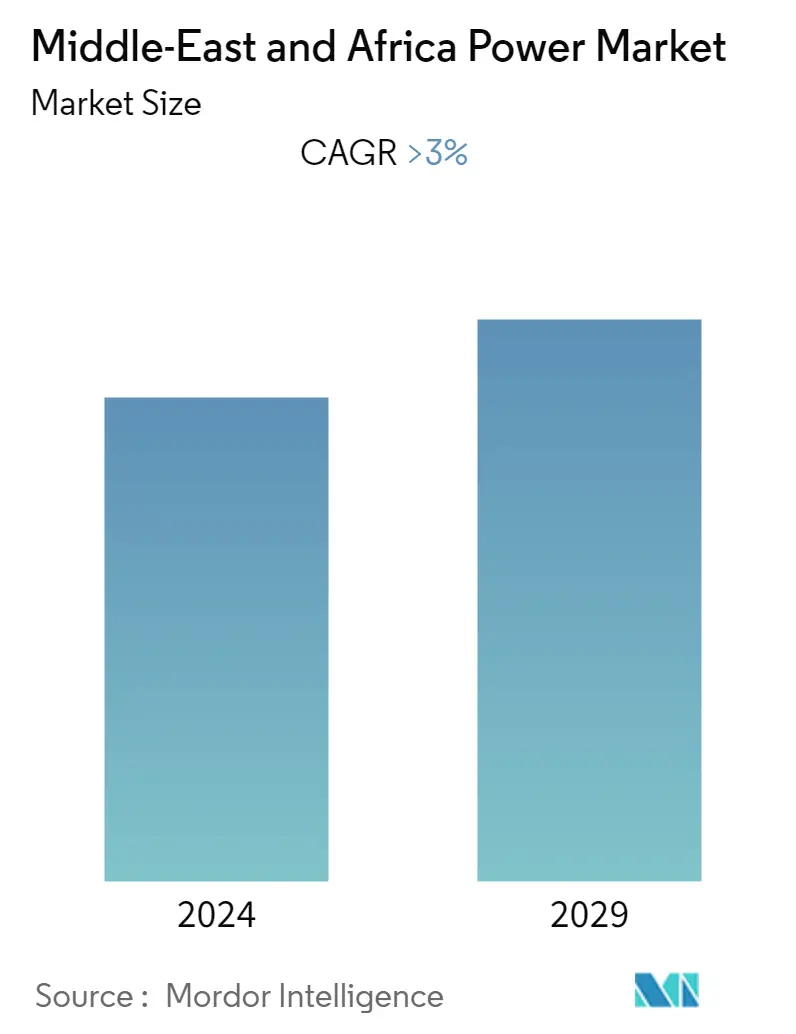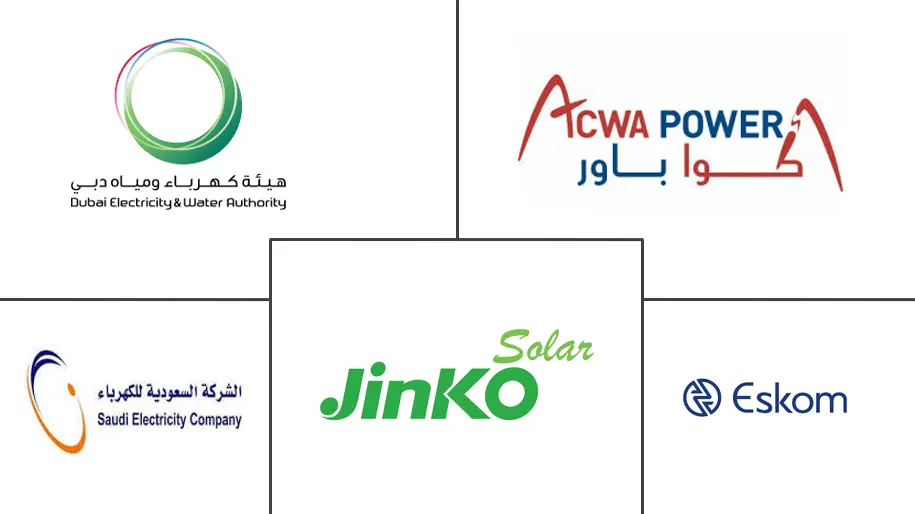Market Size of Middle-East and Africa Power Industry

| Study Period | 2020 - 2029 |
| Base Year For Estimation | 2023 |
| Forecast Data Period | 2024 - 2029 |
| Historical Data Period | 2020 - 2022 |
| CAGR | 3.00 % |
| Market Concentration | Low |
Major Players
*Disclaimer: Major Players sorted in no particular order |
MEA Power Market Analysis
The power market in the Middle-East and Africa region is expected to grow at a CAGR of more than 3% in the forecast period of 2020-2025. Factors such as increasing power demand due to increasing population and rapidly increasing share of renewable and gas-based thermal power plants are likely to drive the market. The degree of urbanization and electrification is also expected to drive power consumption. On the other hand, a huge investment for setting up and modernizing power generation, transmission, or distribution network is restraining the growth of the market.
- Thermal power is expected to continue its dominance with largest share in power generation, owing to the increase in the share of natural gas in power generation.
- By 2050, the electricity demand of the Middle-East is expected to triple in comparison to 2018. Moreover, with a significant share in African countries without electricity, vast opportunities are anticipated in the future of the power market.
- Saudi Arabia is leading the power market with highest electricity consumption. With coming projects and increasing demand, the nation is expected to dominate in the forecast period also.
MEA Power Industry Segmentation
The Middle-East and Africa power market report include:
| Generation - Source | |
| Thermal | |
| Renewable | |
| Hydro | |
| Others |
| Geogrpahy | |
| United Arab Emirates | |
| Saudi Arabia | |
| Egypt | |
| Jordan | |
| Rest of Middle-East and Africa |
Middle-East and Africa Power Market Size Summary
The power market in the Middle-East and Africa is poised for growth, driven by increasing power demand due to population growth and urbanization, alongside a shift towards renewable and gas-based thermal power plants. Despite the potential for expansion, the market faces challenges such as the need for substantial investments in modernizing power generation, transmission, and distribution networks. Thermal power, particularly from natural gas, is expected to maintain its dominance in the region's power generation mix. The vast oil and gas reserves in the region are anticipated to support thermal plants in the long term, with significant projects underway, such as the Hassyan coal-fired power plant in Dubai and a natural gas-fired power plant in Egypt.
Saudi Arabia is a key player in the region, leading in electricity consumption and generation. The country is investing in both thermal and renewable energy projects, including solar initiatives, to meet the rising power demand. The fragmented market features major companies like Jinko Solar Holding Co Ltd, ACWA POWER BARKA SAOG, and others, contributing to the diverse energy landscape. As the region continues to develop its power infrastructure, opportunities for growth remain substantial, particularly in African countries with limited access to electricity.
Middle-East and Africa Power Market Size - Table of Contents
-
1. MARKET OVERVIEW
-
1.1 Introduction
-
1.2 Installed Power Generating Capacity Forecast, in Megawatt, till 2025
-
1.3 Electricity Generation and Consumption Forecast, in Terawatt Hours, till 2025
-
1.4 Recent Trends and Developments
-
1.5 Government Policies and Regulations
-
1.6 Market Dynamics
-
1.6.1 Drivers
-
1.6.2 Restraints
-
-
1.7 Supply Chain Analysis
-
1.8 Porter's Five Forces Analysis
-
1.8.1 Bargaining Power of Suppliers
-
1.8.2 Bargaining Power of Consumers
-
1.8.3 Threat of New Entrants
-
1.8.4 Threat of Substitute Products and Services
-
1.8.5 Intensity of Competitive Rivalry
-
-
-
2. MARKET SEGMENTATION
-
2.1 Generation - Source
-
2.1.1 Thermal
-
2.1.2 Renewable
-
2.1.3 Hydro
-
2.1.4 Others
-
-
2.2 Transmission and Distribution
-
2.3 Geogrpahy
-
2.3.1 United Arab Emirates
-
2.3.2 Saudi Arabia
-
2.3.3 Egypt
-
2.3.4 Jordan
-
2.3.5 Rest of Middle-East and Africa
-
-
Middle-East and Africa Power Market Size FAQs
What is the current Middle-East and Africa Power Market size?
The Middle-East and Africa Power Market is projected to register a CAGR of greater than 3% during the forecast period (2024-2029)
Who are the key players in Middle-East and Africa Power Market?
JinkoSolar Holding Co Ltd. , ACWA POWER BARKA SAOG , Dubai Electricity and Water Authority, Eskom Holdings SOC Ltd and Saudi Electricity Company are the major companies operating in the Middle-East and Africa Power Market.

